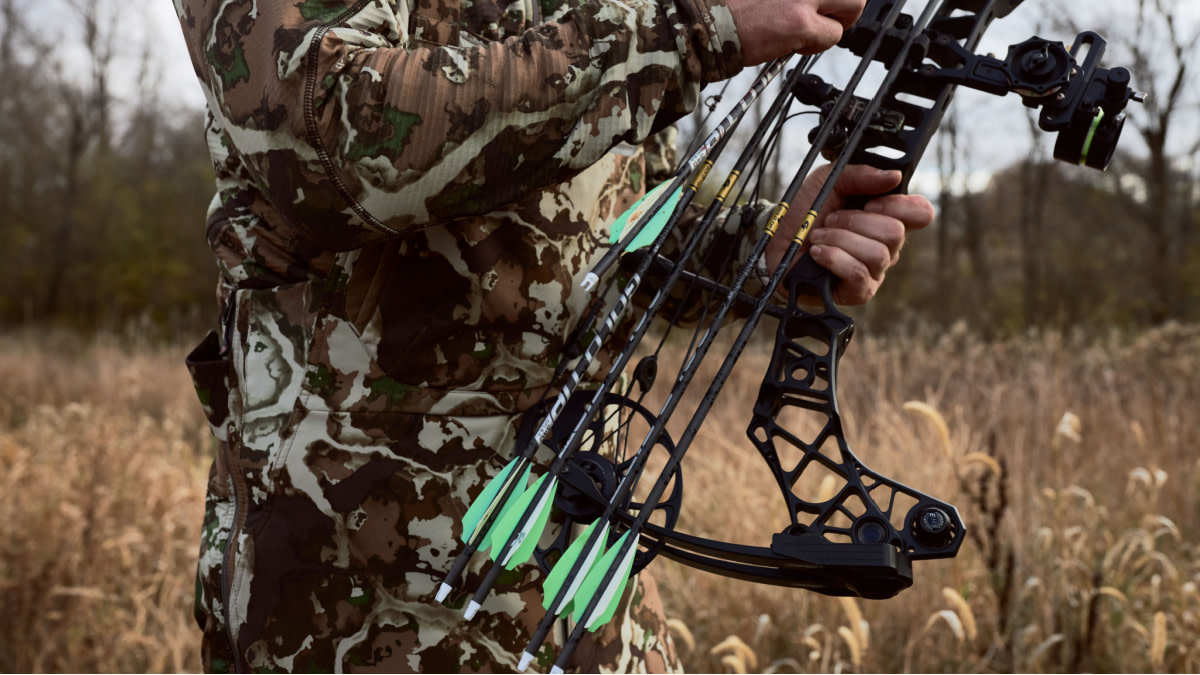
Deer hunters love to debate. We argue over broadhead styles. We fight over who makes the best bow. We will nearly come to blows over baiting versus food plots versus hunting natural movement.
What we don’t get overly passionate about is choosing the best hunting arrows.
I talk to a pile of whitetail hunters each year and many of them don’t really even know what arrows they're shooting, besides who manufactured them. This is not the case with Western hunters, especially elk hunters. When your sharp stick has to make it from one side of a 700-pound bull to the other, your margin of error drops.
Whitetails, weighing in at a quarter of that, don’t seem to demand the same level of consideration. It’s easy not to take our whitetail arrows seriously, but that’s a mistake.
To choose the best arrows for your setup, you’ve first got to consider several individual aspects of your bow. No one knows this more than Easton’s Gary Cornum.
“Obviously, you need to know your bow type. But also your bow’s poundage, proper arrow length for your bow, your bow’s brace height, and the speed of your rig,” Cornum said.
Hardest Part About Choosing the Best Hunting Arrow All of these specs will play into your decision, of which the foundation is built on spine (or the stiffness) of your arrow. According to Cornum, this is one aspect you absolutely don’t want to get wrong when loading up on new archery ammo. It's also one thing hunters get wrong most often.
“Matching the proper spine to your setup is vitally important,” Cornum said. “You can use online charts, or I also recommend you visit a qualified pro shop to find the very best fit for your bow.”
If you’re shooting with a release it’s pretty hard to be overspined, although it is possible. Underspined is a different story, and an arrow that isn’t stiff enough for your rig will make tuning a nightmare and broadhead shooting a real test of your patience.
If you don’t enlist the help of a pro shop employee this can get tricky. You might plug in your specs to an online spine calculator and see that you’re in the gray area between a 340 or 300 spine. So you buy a dozen 340s and think you’re good to go, but your bow is built with aggressive cams for speed and your tips are 125 grains. Without knowing why your bow doesn’t tune well, your arrows don’t group well, and you’re stumped.
Odds are, you’re underspined even though all of the arrow charts said you’d be fine. Sometimes this can be remedied by backing off the poundage of your rig or cutting an inch off of your arrows if you have the room.
Other times, we underspine ourselves by thinking that we need to chase high chronograph readings. We conflate arrow weight with arrow spine and drop down in spine stiffness to shave a little grains-per-inch weight off. Now we are shooting less-stiff arrows, and while they might be faster, it doesn’t matter if they don’t go where you aim. What muddies these waters further is that from manufacturer to manufacturer there is no universal spine rating.
The bottom line is that your individual rig has a specific stiffness of arrow that will perform best. This is nonnegotiable and the basis for choosing perfect deer arrows. You won’t regret either devoting time to figuring this out for yourself or leaning on the knowledge of someone at your local pro shop who deals with bows and arrows on a daily basis.
The Best Hunting Arrows Aren't Cheap You probably won’t regret if you spend up a bit for arrows, although I realize this is a rough topic for some folks. While long-distance shooters fret over their arrows, whitetail hunters often don’t. Our shots are in tight quarters and it doesn’t seem necessary to spend $200 when you could pay $60.
You may be right, but there is a reason some shafts cost a hell of a lot more than others. According to Cornum, this comes down to materials and processes. The more complex and exact they get, the higher the cost.
“There are several factors that affect the cost of an arrow,” Cornum said. “Raw materials, quality of components, and tolerance levels in spine, weight, and straightness all affect the price tag.”
Price is also affected by manufacturing methods like those that blend aluminum and carbon or the use of ultra-lightweight carbon. These among others can offer improvements in accuracy, velocity, and penetration.
Are spendy arrows necessary to the whitetail hunter? Nope. But if you’re having tuning issues, or trouble getting your broadheads to fly, it’s possible that an upgrade in arrows will help. Higher quality, batched arrows also tend to cut down on the number of fliers in any given dozen, meaning that it’s more likely all 12 of your arrows will group tightly.
So when you're budgeting out a rig, spend a little less on your rest and sight and a little more on your arrows and broadheads.
The real danger of poorly performing arrows is proven in the field. If your broadhead flight is even a little wonky or you’re not getting consistent pass-throughs on broadside whitetails, then you might be witnessing symptoms of a real underlying issue with your arrows.
Shooting at bullseyes with field-point-tipped ammo is one thing. Trying to deflate the lungs of a living critter is another thing entirely, so don’t take your arrow choice lightly.
Feature image via Captured Creative.







Conversation